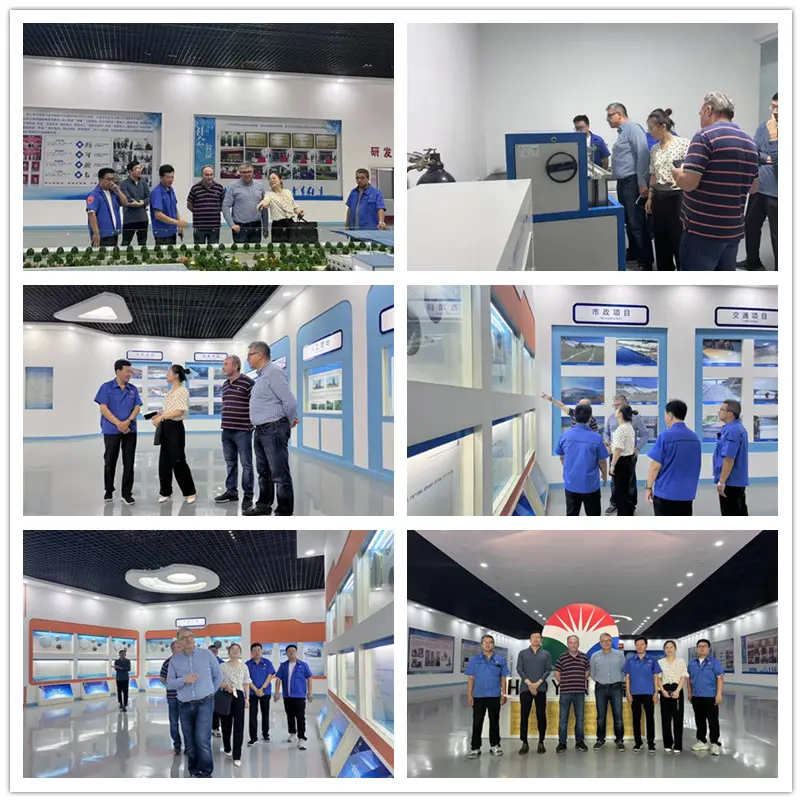Ultrafine Fly Ash Solid Waste Disposal Project
853675.webp)
Background:
The Huaian Ningxia Lingwu Power Plant is undertaking a new project for the annual production of 3 million tons of ultrafine fly ash comprehensive utilization. The total investment for the project is 520 million RMB, covering an area of 185 acres. The main construction includes a fly ash grinding station, a research center, an ash storage yard, and more, with an annual processing capacity of 3 million tons of fly ash. Upon completion, the project is expected to generate annual sales revenue of 300 million RMB, addressing the entire annual production of fly ash from the Huaian Ningxia Lingwu Power Plant. This achievement marks a significant step towards the cyclic and comprehensive utilization of industrial waste residues.
The anti-leakage system of this project select our company's filament composite geomembrane, effectively preventing alkaline leachate from permeating and contaminating the surrounding environment. This project has been put into operation, achieving positive environmental results and economic benefits.
Problems to be solved:
1, Leakage Issue: In the process of the Ultrafine Fly Ash Solid Waste Disposal Project, there is a potential risk of leakage. The waste material may permeate into the surrounding environment or groundwater, leading to environmental contamination and resource wastage.
2, Moisture Evaporation Issue: The generation of moisture during the treatment process can impact the stability of the engineering, introducing unfavorable conditions such as the formation of leachate, thereby affecting the effectiveness of waste disposal.
3, Pollution Protection Issue: The project needs to effectively protect the underlying soil and groundwater from potential pollutants present in the ultrafine fly ash.
Our Solutions
614767.webp)
1, Anti-leakage Solution: Use1mm filament black composite geomembrane as a crucial isolation layer effectively prevents the leakage of ultrafine fly ash waste. This ensures its safe and controlled handling, minimizing adverse impacts on the surrounding environment.
2, Moisture Evaporation Solution: black geomembrane with enhanced heat absorption characteristics facilitates the evaporation of moisture, thereby maintaining the stability of the waste disposal area and mitigating the negative effects associated with excessive moisture.
3, Pollution Protection Solution: The geomembrane not only serves as an anti-leakage layer but also functions as a protective barrier, safeguarding the underlying soil and groundwater from potential pollutants. This enhances the environmental protection standards and long-term stability of the project.
Product Details
1mm filament black composite geomembrane

Filament composite black geomembrane refers to a geosynthetic membrane composed of long fibers (or filaments) and black geomembrane, it has three layers, in the middle is black geomembrane and two sides are filament nonwoven geofabrics.
Its main functions include:
1, Anti-leakage: Long-fiber composite geomembranes typically possess high impermeability and sealing properties. They effectively isolate and prevent the infiltration of water, chemicals, or waste into the soil or groundwater, preventing environmental contamination.
2, Strength and Durability: Long-fiber materials provide the geomembrane with higher strength and durability. This allows it to withstand external pressures such as groundwater pressure and soil deformation, maintaining long-term stability.
3, Heat Absorption: The black color of the geomembrane facilitates more effective heat absorption, promoting the potential evaporation of moisture. This feature is advantageous for maintaining stability, especially in projects dealing with moist waste materials.
4, Environmental Protection: By preventing leakage and contamination, long-fiber composite black geomembranes contribute to an elevated level of environmental protection in engineering projects, ensuring the quality of underlying soil and groundwater.
Advantages of Hanyang Invironmental
1, We are a leading Chinese factory with over 15 years experience in supplying geosythetic
Our factory covers an area of over 230 acres with more than 40,000 square meters of standardized industrial workshops. The company boasts over 26 modern production lines for geosynthetic materials, with a total annual production capacity of 73,500 tons.

Our factory operates a diverse range of products, including smooth/textured geomembranes, composite geomembranes, polyester spunbond filament geotextiles, high-strength woven geotextiles, polyester/polypropylene short-fiber geotextiles, three-dimensional composite drainage nets, bentonite GCL, and single/double-directional geogrids. These geosynthetic materials possess functions such as waterproofing, anti-leakage, reinforcement, isolation, and filtration.
The products find extensive applications in various environmental projects, including water conservancy, transportation, municipal solid waste treatment, industrial solid waste/hazardous waste disposal, tailings ponds, and environmental pollution control, contributing to multiple areas of environmental protection and engineering.
890247.webp)
586155.webp)
2,Highly skilled and specialized team

513426.webp)
FAQ
1. What is the role of the 1mm black composite geomembrane in the Ultrafine Fly Ash Solid Waste Disposal Project?
The 1mm black composite geomembrane serves as an impermeable barrier, preventing the leachate from the fly ash solid waste from contaminating the surrounding soil and groundwater. It plays a crucial role in environmental protection and containment.
2. How does the 1mm thickness of the geomembrane contribute to the project's effectiveness?
The 1mm thickness provides a robust barrier against potential leaks and ensures long-term durability. This thickness is specifically designed to withstand the harsh conditions associated with waste disposal projects, offering enhanced protection and reliability.
3. Can the 1mm black composite geomembrane withstand exposure to UV radiation and other environmental factors?
Answer: Yes, the geomembrane is UV-resistant and designed to endure various environmental conditions. Its composition includes materials that resist degradation from exposure to sunlight, ensuring its performance and integrity over an extended lifespan.
4. How is the geomembrane installed, and what considerations should be taken during the installation process?
The installation involves careful preparation of the subgrade, secure anchoring, and proper welding of seams to create a continuous barrier. It is crucial to follow manufacturer guidelines, conduct thorough inspections, and ensure proper quality control throughout the installation process.
5. What are the advantages of using a black composite geomembrane over other materials for fly ash solid waste disposal?
The black composite geomembrane offers superior chemical resistance, flexibility, and durability. Its impermeable nature effectively contains waste, preventing environmental contamination. Additionally, the geomembrane's black color enhances solar absorption, promoting efficient evaporation of moisture within the waste containment area.
942.webp)
897.webp)
942.webp)
237.webp)